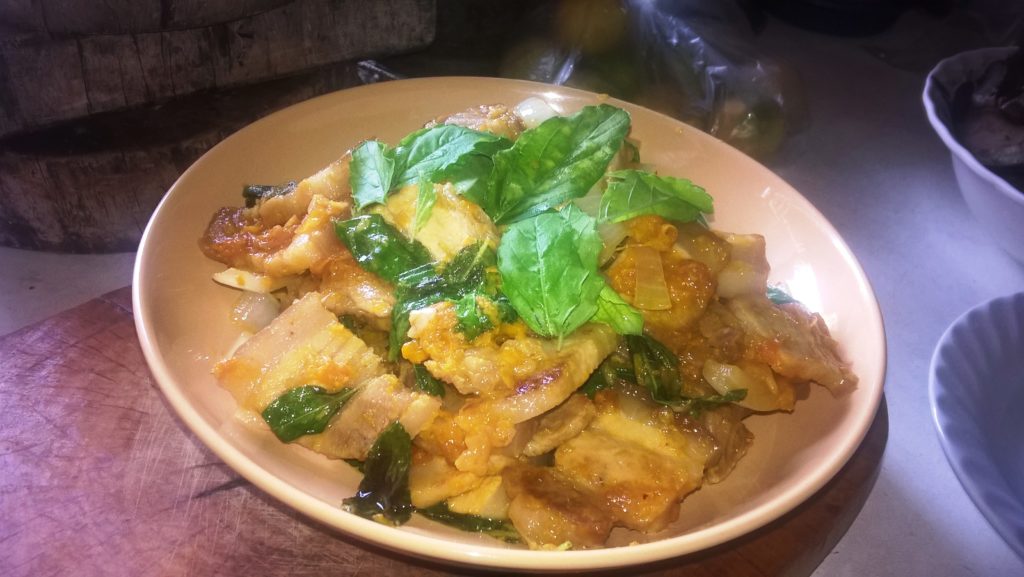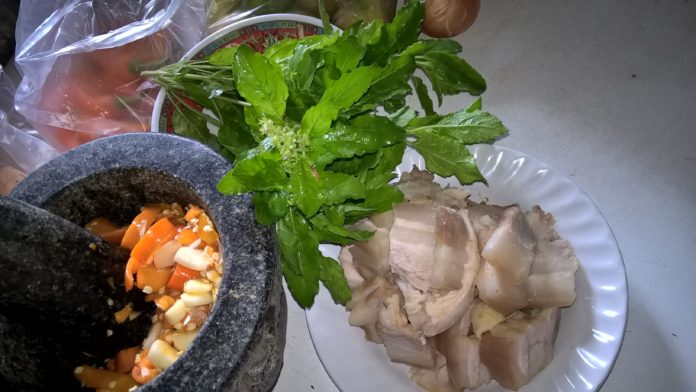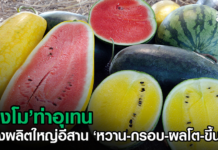| ผู้เขียน | Danai Huntrakul |
|---|---|
| เผยแพร่ |
วันเพ็ญเดือนเจ็ด ตามปฏิทินจันทรคติจีน เรียกว่า เทศกาลผี สำคัญอันดับ 2 รองจากวันตรุษจีน ถือเป็นวันเปิดประตูนรกให้วิญญาณทั้งหลายออกมารับกุศลผลบุญไปเกิดใหม่ คนจีนและคนไทยเชื้อสายจีน หรือคนจีนโพ้นทะเล จึงถือโอกาสทำบุญอุทิศให้แก่บรรพบุรุษ และพลอยให้วิญญาณพเนจรไม่มีญาติได้รับอานิสงส์ไปด้วย
เป็นประเพณีของชาวจีนตอนใต้ ในมณฑลกวางตุ้ง ยูนนาน ฝูเจี้ยน กวางสี ฯลฯ ในบางท้องถิ่นของไต้หวัน มีการลอยกระทงด้วย เราเรียกว่า สารทจีน
ไทยเราก็มีสารทด้วยเหมือนกัน “สารท” แปลว่า ฤดูใบไม้ร่วง เป็นระยะที่พืชพันธุ์ธัญชาติและผลไม้เริ่มสุกให้พืชผลครั้งแรกในฤดู เป็นวาระแห่งความยินดี และถือเป็นเทศกาลแห่งความรื่นเริง เรียกว่าสารทเดือนสิบ ตรงกับวันแรม 15 ค่ำ เดือน 10 ราวปลายเดือนกันยายนถึงเดือนตุลาคม
เป็นเทศกาลทำบุญ โดยนำพืชพรรณธัญญาหารแรกเก็บเกี่ยวมาปรุงเป็นข้าวทิพย์และข้าวมธุปายาสถวายพระสงฆ์ เป็นประเพณีที่รับมาจากศาสนาพราหมณ์ตั้งแต่สมัยสุโขทัย แสดงความกตัญญูกตเวทีต่อบรรพชนผู้มีพระคุณและญาติที่ล่วงลับ ชาวบ้านจะทำขนมกระยาสารทไว้แจกจ่ายในหมู่บ้าน ลูกหลานหนุ่มสาวบ้านใกล้เรือนเคียงก็ได้พบปะกันในโอกาสนี้นี่เอง
แล้วยังเป็นการแสดงกตัญญูต่อแม่โพสพ หรือผีไร่ ผีนา ที่ช่วยรักษาข้าวในนาให้เจริญงอกงามดี ตามจารีตสังคมเกษตรทำไร่ทำนาของคนไทย ช่วงเดือน 10 นี้ รวงข้าวกำลังงามอร่ามรอเก็บเกี่ยวเมื่อสุก จึงมีเวลาว่างพอที่จะทำบุญตอบแทน
บุญวันสารทนี้ ภาคกลาง เรียกว่า “สารทไทย” ภาคเหนือ เรียก “งานทานสลากภัต” หรือ “ตานก๋วยสลาก” ภาคอีสาน “ทำบุญข้าวสาก” และภาคใต้ เรียก “งานบุญเดือนสิบ” หรือ “ประเพณีชิงเปรต” แม้ชื่อจะต่าง แต่ก็มีจุดประสงค์เดียวกันคือ การทำบุญกลางปี เพื่อให้เกิดสิริมงคลแก่ตนเองที่มีชีวิตผ่านพ้นเวลามาได้อีกครึ่งปี และเป็นการทำบุญอุทิศส่วนกุศลให้แก่บรรพบุรุษ
บ้านแม่ยายผม พ่อตามาทางจีนแต้จิ๋ว ทุกปีเมื่อถึงวันสารทจีน พ่อจะตื่นแต่เช้า ไปท่าน้ำหน้าบ้าน จุดธูปบริกรรม แล้วถวายของไหว้ มีหมูสามชั้น ไก่ และเป็ด ที่แม่จัดใส่ถาด
จากนั้น พ่อจะจุดประทัดกราวใหญ่ เป็นอันเสร็จพิธี
ที่เหลือตกเป็นประเพณีของเขยอย่างผม ที่จะช่วยแม่ยายจัดการกับของไหว้ทั้งหลายนั้น
 เป็ดนั้นพะโล้มาแล้ว ผมจึงเลาะกระดูกสับเรียงใส่ชามเปล ส่วนไก่และหมูต้มแค่สุกภายนอก สับแล้วต้องนำไปรวน ปรุงรสด้วยเกลือ พริกไทย ซอสปรุงรส และทำน้ำปลา กระเทียม พริกขี้หนู บีบมะนาวไว้จิ้มแก้เลี่ยน กระดูกเป็ดไก่นำไปต้มจับฉ่ายไว้ซดน้ำ ผมรับภาระนี้มาร่วม 25 ปีแล้ว
เป็ดนั้นพะโล้มาแล้ว ผมจึงเลาะกระดูกสับเรียงใส่ชามเปล ส่วนไก่และหมูต้มแค่สุกภายนอก สับแล้วต้องนำไปรวน ปรุงรสด้วยเกลือ พริกไทย ซอสปรุงรส และทำน้ำปลา กระเทียม พริกขี้หนู บีบมะนาวไว้จิ้มแก้เลี่ยน กระดูกเป็ดไก่นำไปต้มจับฉ่ายไว้ซดน้ำ ผมรับภาระนี้มาร่วม 25 ปีแล้ว
ปีนี้ไปบ้านแม่ยายแต่เช้า หิ้วถุงพริกเหลืองไปด้วย สับของไหว้ให้แม่ยายรวนหมดแล้ว ไม่ลืมขยักสามชั้นไว้ชามเขื่อง ตำพริกเหลืองกับกระเทียมอย่างละขีด เก็บกะเพราที่ขึ้นงามข้างรั้วบ้านแม่ เอาหมูมารวนน้ำมันกับพริกเหลือง ปรุงซีอิ๊วขาว ซอสปรุงรส แม่ยายขอให้เหยาะน้ำมันหอยหน่อย อร่อยปานอาหารทิพย์และไม่เลี่ยนเลย
Spirit Festival
On Full-Moon-7th-Month of the Chinese lunar calendar – Spirit Festival, ranked next to the Chinese New Year, when spirits are unleashed from the lower realm to seek grace for rebirth; the Chinese, Thai Chinese and the Overseas Chinese make merit dedicating to their ancestors, while rootless ghosts also benefit from the blessings.
The rite is practiced by the Chinese of the South in Guangzhou, Yunnan, Fujian, Guangxi and parts of Taiwan; with even river floats in some areas. We call it Sat Chin.
We Thais also have similar rite. In Thai Sat means “autumn”, when assortment of crops and fruits bear their first yield. It’s time to celebrate, a Seasonal Festival called 10th Month Sat held on the full waning day around late September to October.
It’s a merit making festival, with the season’s first harvest to make a ceremonial cake and “Matupayas” rice porridge as offerings to the monks, a rite adopted from Brahmin since Sukhothai Era, as esteem gratitude to benefactors and ancestors. Folks make Krayasat (a very sweet granola bar) for village exchange dessert in which local young ones get to meet.
It’s also a gratitude to the Mother Rice or Spirit of Paddy Field that nurture the rice growth in the custom of Thai Agriculture. At the 10th month, rice ears are cooking almost ready for harvest, allowing leisure time for farmers to make merit.
This Sat Festival is differently called in each region though of the same purpose: a mid-year merit for reconciliation surviving another half year, while dedicating good deeds to ancestors.
At mom-in-law’s, dad was of Teochew Chinese lineage, at every Spirit Festival he would get up early, go to the pier in the house’s front, perform his rite by lighting joss stick, chant his prayer and make offerings of pork belly, chicken and duck arranged by mom.
The he lit a big round of firecracker, and that’s all.
Next ritual falls under the son-in-law like me, to take further steps for the offerings.
The duck was five-spices braised; so I fillet, chop to lay it on a plate. Chicken and pork belly were half-cooked; I had to chop, sauté – season with salt, pepper and soy sauce; and make dipping with fish sauce, garlic, bird chili and lime juice. Fowl bones go into the vegetable hodgepodge. I’ve been doing my bid for the last 25 years.
This year I went early to m-i-l’s house with a sachet of yellow chili. After all the chop and sauté done with a large plate of cached pork belly, I pounded the yellow chili with garlic, picked hot basil abundant by mom’s fence, and stir fried the pork belly in the chili paste, seasoned with light soy sauce, a dash of oyster sauce to mom’s request. It tasted heavenly and not at all greasy.






